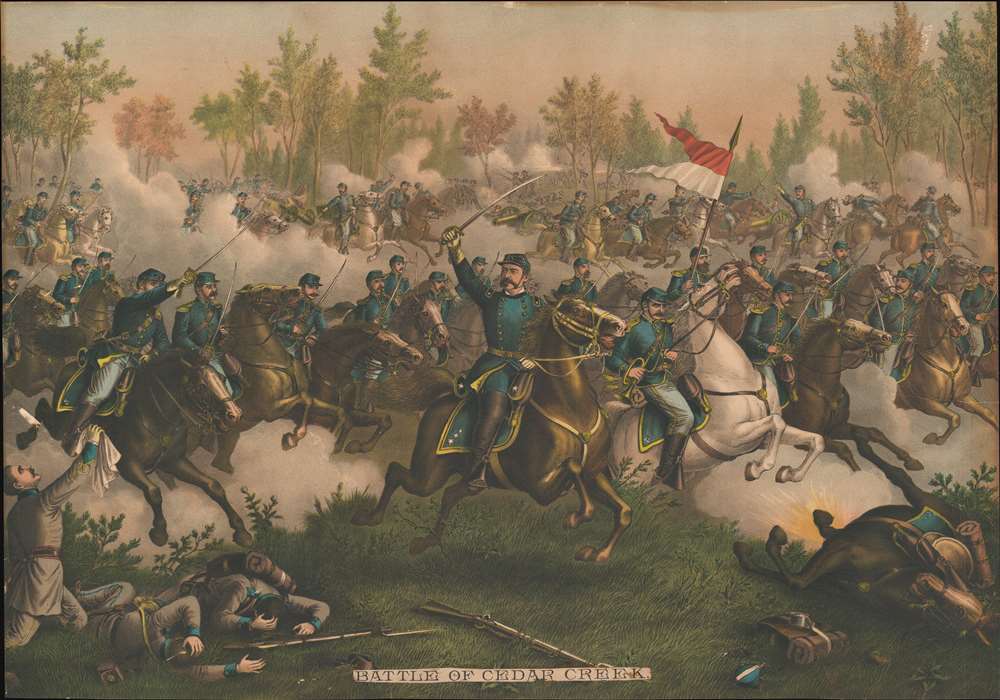1890 Kurz and Allison View of the Battle of Cedar Creek, Virginia
BattleCedarCreek-kurzallison-1890
Title
1890 (undated) 17.25 x 24.625 in (43.815 x 62.5475 cm)
Description
The Importance of the Shenandoah Valley and the Battle of Cedar Creek
The Battle of Cedar Creek ended Confederate operations in the strategically important Shenandoah Valley and secured Washington, D.C. During the first four years of the war, the Confederate army used the Shenandoah Valley as a vital source of food for the Army of Northern Virginia. Protected by the Blue Ridge Mountains on the east and the Allegheny Mountains on the west, the Shenandoah Valley provided a 'protected corridor' through which Confederate troops could travel north into Pennsylvania, as General Lee did during the 1863 Gettysburg Campaign. It also allowed Confederate armies to launch flanking attacks on Union armies invading Virginia. At the Battle of Cedar Creek, Union Major General Sheridan ended Confederate dominance in the Shenandoah Valley. This removed a vital supply source for General Lee's Army of Northern Virginia (then under siege at Petersburg) and meant that Washington, D.C. and the Union could never again be threatened by a Confederate army.Publication History and Census
This view was drawn and published by Louis Kurz and Alexander Allison in 1890. An example is cataloged in OCLC and is part of the institutional collection at the National Defense University. A second example is part of the collection at the Library of Congress.Cartographer
Kurz and Allison (1880 - c. 1905) was an American publishing firm known for its chromolithographs. Founded by Louis Kurz (1835 - 1921) and Alexander Allison, the firm was based at 267-269 Wabash Avenue in Chicago. In the partnership, it is known that Kurz, an Austrian immigrant, was the lithographer and it is presumed that Allison provided the financial backing. The firm is most well-known for its series of thirty-six battle scenes from the American Civil War. At the time of their publication, the late 1880s and early 1890s, a general nostalgia was prevalent among Civil War veterans (of which Kurz was one), and evidently the company was trying to capitalize on the sentiment. Kurz and Allison's Civil War prints were not the first such prints to be issued, but they were by far the most popular. In a style reminiscent of Currier and Ives, Kurz and Allison lithographs are not meant to be historical representations, and even, from time to time, included historical inaccuracies. Even so, 'prints depicting the Civil War battles by Kurz and Allison are among the most sought-after collectibles of Civil War enthusiasts.' Their prints are also notable for featuring African-American soldiers, a rarity for the era. After the outbreak of the Spanish-American War, the firm published views from famous battles and continued doing so for the campaigns of the Philippine-American War and the Russo-Japanese War. More by this mapmaker...

